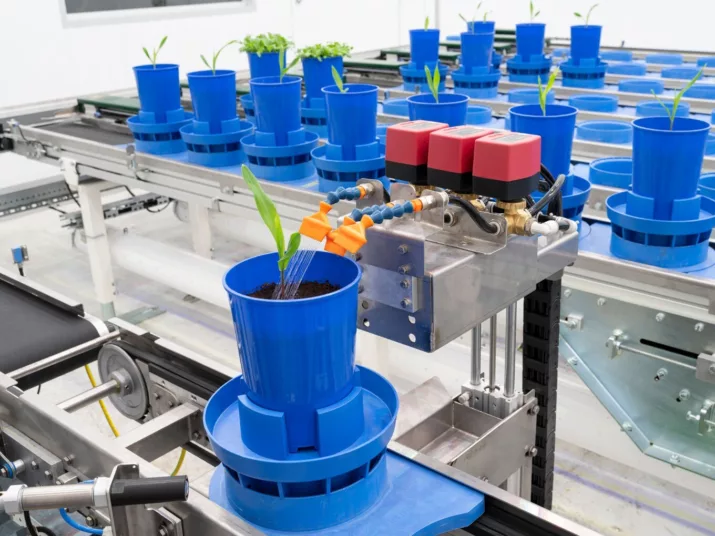
How smart technology is helping to breed robust plant varieties for the future
Combating climate stress with high-tech
Modern plant research today uses high-tech methods to develop new, robust varieties that are better able to cope with climate changes such as heat, drought or nutrient deficiency. It is important to understand exactly how a plant reacts to its environment - i.e. how it grows, what its roots look like or how well it can withstand stress.

Experts refer to this as “phenotyping”. This means that they systematically observe and measure what the plant shows under certain conditions - how its genetic make-up expresses itself in reality. “The phenotype shows how a plant's genes actually manifest themselves under certain climatic conditions,” explains physicist Dr. Stefan Gerth, who researches plant phenotyping at the Fraunhofer Institute for Integrated Circuits IIS (Fraunhofer IIS).
Physicist Dr. Stefan Gerth conducts research into the phenotyping of plants at the Fraunhofer Institute for Integrated Circuits IIS (Fraunhofer IIS).

Foto: Fraunhofer IIS / Paul Pulkert
In the past, this was usually assessed by eye, for example with a school grade from one to five. Today, this can be done much more accurately: researchers like Gerth use state-of-the-art technology. X-ray methods analyze root and tuber growth underground, 2D and 3D imaging capture above-ground characteristics, multispectral cameras measure leaf health and water content, laser light sectioning systems create precise 3D surface models.
This makes it possible to analyze not only the visible plant above ground, but also what is happening below ground, for example in the roots or tubers. “We want to move away from subjective assessments and towards objectified characteristics,” says Gerth. “For example: How much does a plant grow in a certain period of time? How does it regulate its tuber volume under drought stress? We can now make that visible.”
Saving time with reliable data
At the Fraunhofer IIS site, the Phenotyping Technology Center in Merkendorf, Bavaria, there is a special research facility called SEPP. Up to 400 plants grow there at the same time - in special chambers in which drought, heat or a lack of light can be specifically created. Various sensors and cameras then provide precise data: How quickly does the plant grow? How does the root system change in dry conditions? How healthy are the leaves?This information helps breeders to recognize early on which plants adapt particularly well to difficult conditions. This allows them to decide more quickly which varieties should be further bred and tested in the field. We save time because we can generate reliable data with just a few plants,” says Gerth. “This approach saves time because candidates for real field trials can be selected on the basis of objective information.”
With the “SEPP” system, the researchers are able to cultivate up to 400 plants simultaneously under optimal and controllable conditions.
Photo: Fraunhofer IIS / Paul Pulkert
It is important to Stefan Gerth that technology does not replace people. It only provides the data. “The experts still decide what to do with it. They know which features really count in practice.”
For such projects to succeed, many disciplines have to work closely together - from biology to mechanical engineering to IT. “Sometimes that's not easy, because each discipline has its own way of thinking. You first have to find a common language,” says Gerth. There are also legal hurdles, such as new EU regulations. This is precisely why it is important to establish open and versatile research systems such as SEPP, so that everyone - large and small breeding operations alike - can benefit from technological advances.